What Is Behavioral Marketing? Guide (2025)
Discover behavioral marketing, which uses data on user behavior to deliver personalized messages and improve engagement.

Imagine browsing for running shoes on a site and then seeing those shoes pop up across every feed you check. For many of us this triggers the question: what is behavioral in marketing?
In plain terms it means adapting messages to how people behave on the web, not just who they are. Rather than blast generic emails, you watch actions—pages visited, items added to cart, time spent in app—and respond with something timely and helpful.
For lean teams building early‑stage products, this approach isn’t about being fancy; it’s about saving money, reducing guesswork and building trust. This guide explores why behaviour matters and how to harness it without losing your human touch.
Understanding consumer behaviour
To design better marketing, we need to understand how people make decisions. Behaviour isn’t random; it’s shaped by motivations, emotions, needs and the cues around us. Research from Nielsen Norman Group shows that complex or confusing workflows add “sludge” that slows decisions. When experiences are clear and supportive, users are more satisfied and more likely to stay. There are three main drivers:
- Motivation and needs: People act to satisfy tangible needs such as convenience, status or safety. Stronger motivations speed up decisions.
- Emotions: Feelings like fear of missing out, excitement or relief drive action. Emotional appeals often outperform purely rational ones.
- External triggers: Notifications, limited‑time offers or social proof push someone from thinking about your product to taking action.
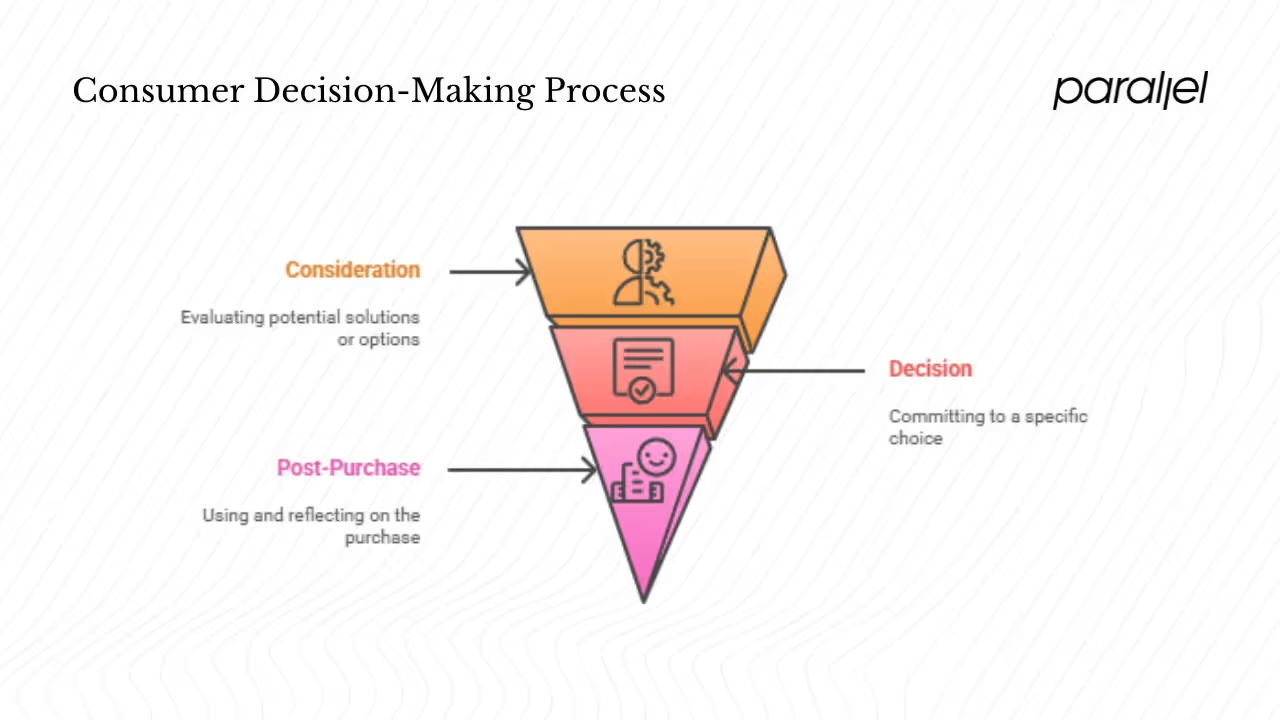
Observing behaviour is powerful, but it doesn’t tell the whole story. Nielsen Norman Group distinguishes attitudinal research—what people say and believe—from behavioural research—what they actually do. A complete view comes from combining both: interview users to understand their motivations, then validate those statements with behavioural data. This combination reveals gaps between intention and action and helps product teams design more empathetic experiences.
Most buying processes move through four stages: awareness (learning about a problem), consideration (evaluating options), decision (committing) and post‑purchase (using and reflecting). Understanding the triggers that move someone from one stage to the next—pain points, desires, scarcity or social proof—helps you design messages that nudge them forward. Behavioural marketing thrives here because it responds to what people actually do at each stage rather than relying on broad persona assumptions. In other words, to answer what is behavioral in marketing you need to study the psychology of choice and the context in which those choices are made.
Defining behavioural marketing
At its heart, behavioural marketing means using observed actions to decide what to say to someone. CDP.com defines it as creating offers based on actions such as website visits, app events or past purchases. It’s the opposite of sending the same message to everyone. Demographic targeting groups people by age or gender; psychographic targeting groups by attitudes. What is behavioral in marketing is grouping by behaviour. You still care about who someone is, but you let their actions tell you when and how to engage.
The principles behind it are simple:
- Past behaviour predicts future behaviour: Someone who visits your pricing page three times is probably evaluating your product.
- Context matters: Timing, channel and lifecycle stage shape how your message lands. A discount sent right after someone abandons a cart can bring them back; sent too early it cheapens your brand.
- Relevance wins: People ignore generic messages but respond when content relates to what they just did. McKinsey’s 2024 personalization report found that 71% of consumers expect personalised interactions and 76% get frustrated when they don’t. Another study notes that 65% of buyers say targeted promotions motivate them to purchase.
There are several forms of behavioural marketing:
- Website behaviour & engagement: Tracking pages visited, time on page, scroll depth and clicks to infer interest.
- Email & campaign behaviour: Observing opens, clicks and conversions to adapt follow‑ups.
- Retargeting ads: Showing ads to visitors who left without converting, often featuring the exact product they viewed.
- Predictive behavioural targeting: Using machine learning to forecast intent (e.g., likelihood to churn or upgrade).
- Location‑based targeting: Leveraging IP or GPS signals to send location‑relevant offers.
The payoff for early‑stage teams is real. Segmented campaigns can lift conversions by 50%, personalising based on behaviour can add another 20%, and targeted promotions account for a significant share of revenue. When budgets are tight, focusing on micro‑segments based on behaviour yields a higher return than broad campaigns. If you’ve ever wondered what is behavioral in marketing and whether it works, the numbers speak for themselves.
However, there are risks. Misusing data feels creepy and erodes trust. Regulations require clear consent, and browsers are phasing out third‑party cookies. That’s why you should rely on first‑party data, explain why you’re collecting it and respect user preferences. The rule of thumb: be transparent, give value back and limit contact to what’s helpful.
Implementing behavioural marketing
The next question is not just what is behavioral in marketing but how to put it to work.
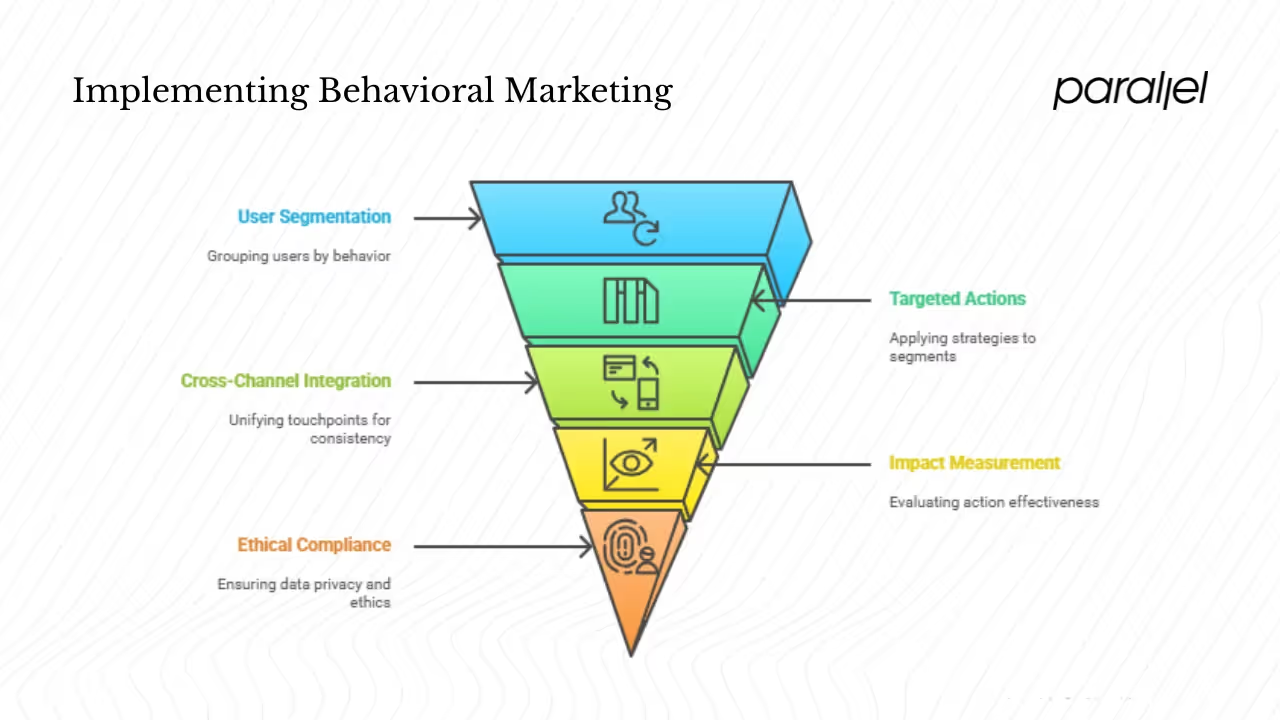
1) Start by collecting the right signals. At a minimum you need:
- A web analytics tool to track page visits, events and referral sources. Choose privacy‑friendly tools and focus on first‑party cookies.
- Product analytics to capture in‑app events—like sign‑ups, feature usage and purchases. Tools like Amplitude or Mixpanel let you define these events and group users into cohorts.
- A marketing automation system to log email opens, clicks and conversions. Integrate it with your product data so you see a complete picture.
- A CRM to tie behaviours back to customer records.
Keep instrumentation lean: track a handful of events that map to your critical flows (e.g., trial started, trial activated, feature used). Over‑instrumentation creates clutter and slows down decision‑making.
2) Once you have data, segment users by behaviour. Common cohorts include frequent users, cart abandoners, dormant accounts or people who viewed a feature but didn’t activate it. Combine behaviours with demographics or context to create micro‑segments—such as “trial users in India who invited teammates.” Then decide how to act on those segments. Examples:
- Cart reminders: Send a reminder email when someone abandons a cart, perhaps with a time‑bound incentive.
- Usage‑driven prompts: Trigger an in‑app prompt when a free user hits a usage limit, explaining how the paid plan offers more.
- Reactivation nudges: Reactivate dormant accounts with a personalised message referencing their last activity.
3) Segmentation and targeting are distinct activities. Segmentation groups users based on shared behaviours; targeting is the action you take after you’ve identified a group. Create only as many segments as you can realistically serve. Too many micro‑segments lead to analysis paralysis and tiny audiences that yield little insight. Focus on a few high‑impact cohorts and expand as patterns show.
As your triggers span email, in‑app and advertising channels, connect the dots. Track how a user moves across touchpoints and how each touchpoint contributes to outcomes. Even simple tagging reveals which combinations drive activation. Without this unified view you risk over‑messaging or misattributing wins.
4) Measure the impact of each action. Use click‑through rate, conversion rate or lift against a control group. A/B test your messages and refine based on what works. Nielsen Norman Group emphasises that combining behavioural observations with attitudinal feedback leads to more empathetic design decisions. In our work with founders of software start‑ups, we often start with a simple hypothesis (“Users abandon sign‑up because they fear complexity”) and test small changes. The value of behavioural marketing is not just the initial boost but the continuous learning loop it creates.
5) Don’t forget ethics and compliance. Be transparent about data collection, offer opt‑ins and respect frequency. Invest in consent management and make sure your practices comply with regulations like GDPR and India’s DPDP Act. As Epsilon notes, with third‑party cookies disappearing, brands must rely on first‑party data and privacy‑friendly alternatives. The question “what is behavioral in marketing” implicitly asks “how do we respect users while using their data?” The answer is to view your audience as partners: tell them how data helps you improve their experience and give them control.
Real‑world applications
Seeing behavioural marketing in action makes the concept concrete. In retail, suggestion engines propose products based on browsing and purchase history. Amazon’s “People who bought this also bought…” upsell is a classic example, and these suggestions can increase revenue. Abandoned‑cart emails and retargeting ads remind shoppers of items they considered.
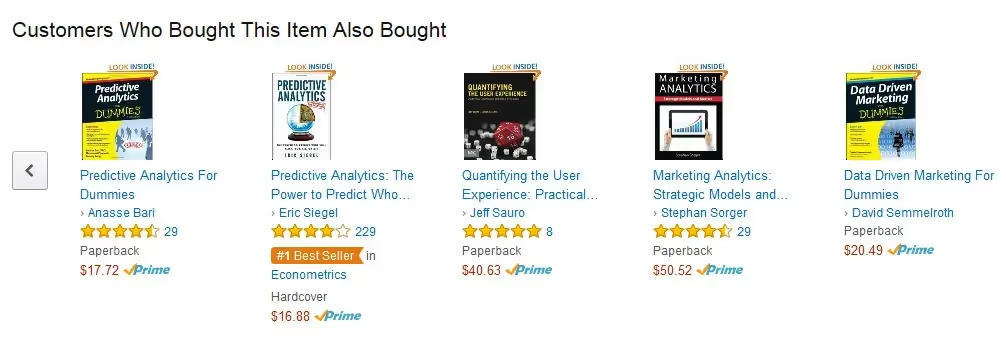
In SaaS, behaviour guides onboarding and monetisation. If users skip a critical step like inviting teammates, you might send them a nudge explaining its value. When customers hit their plan limit, an in‑app prompt shows the benefits of upgrading. Reactivation campaigns target dormant users with personalised updates about new features.
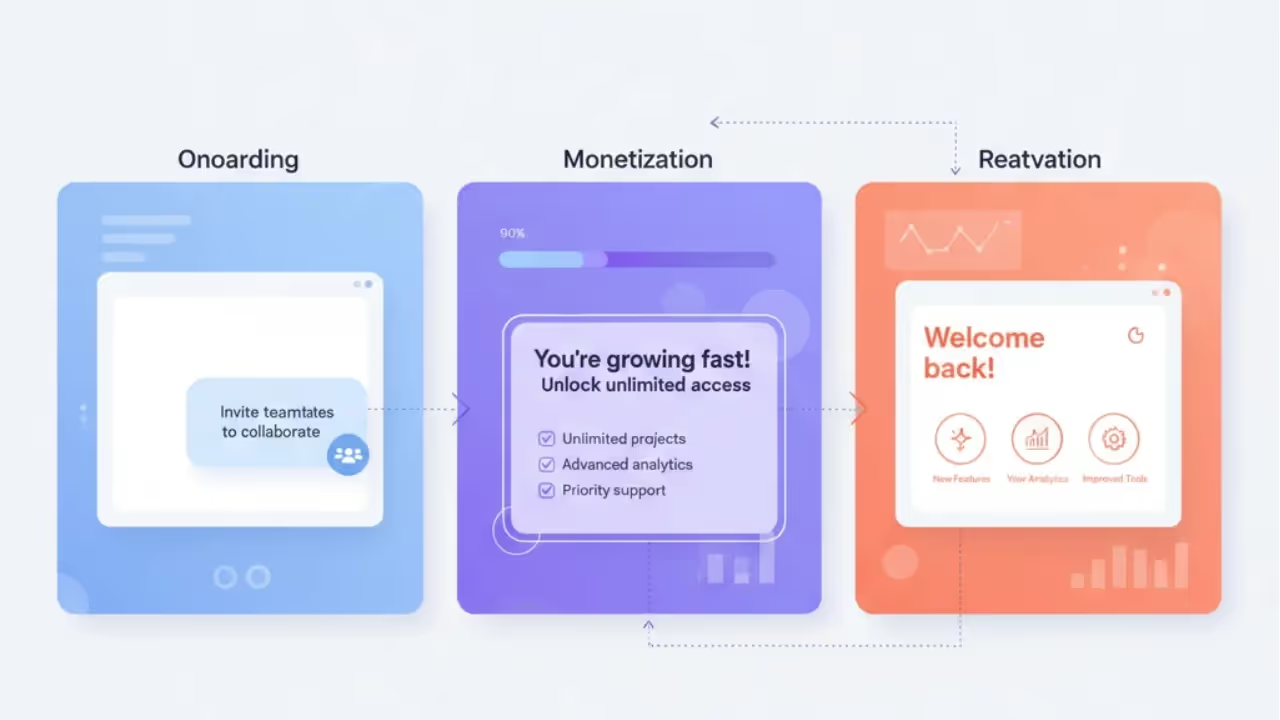
For media and content platforms, behavioural signals drive content suggestions. Streaming apps suggest shows based on watch history; news sites surface articles matching your reading habits. These suggestions keep users engaged longer.

Offline behaviour matters too. With geo‑fencing, a coffee chain can send a coupon when a user is near the shop. Loyalty programs link in‑store purchases with web profiles to inform cross‑channel communication. Advanced cases use machine learning to predict who will churn or who is ready to buy, allowing proactive outreach.
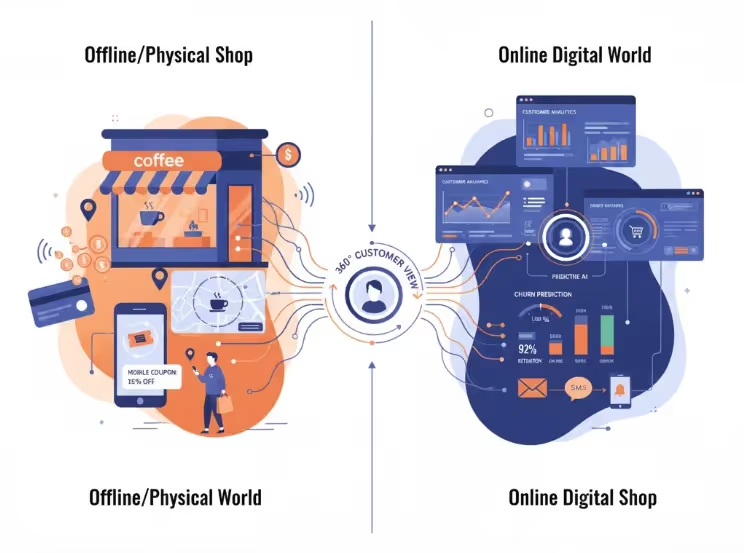
Cross‑channel behaviour shows up in early‑stage contexts too. Suppose a visitor reads multiple blog posts about performance optimization, then attends your webinar and chats with your team at a conference. Stitching these behaviours together lets you recognise them as a high‑intent lead and personalise outreach. With a small dataset, connecting signals from web, email and offline interactions helps you focus scarce resources.

These examples show that what is behavioral in marketing isn’t limited to ads; it infuses product design, onboarding, retention and loyalty. As you adopt it, start with a single use case that matters to your business and scale from there.
Looking ahead
Behavioural marketing will adapt as privacy rules tighten and technology advances. These shifts open opportunities. Third‑party cookies are disappearing, so brands must build first‑party relationships. Federated learning and edge computing will enable on‑device personalisation without transmitting raw data. Predictive models and generative systems will augment human creativity, helping teams scale personalised content. Cross‑channel personalisation will feel smooth as data from web, mobile and offline interactions comes together.
Amid these trends, human judgement remains essential. Algorithms can detect patterns and surface opportunities, but it takes a product manager or designer to decide whether a message adds value or feels intrusive. The future lies in combining machine intelligence with human empathy to create marketing that helps rather than harasses.
These shifts make the question of what is behavioral in marketing even more important. The answer is not a buzzword but a mindset: respect your users, use their actions to help them, and learn continuously. If you’re an early‑stage founder or design leader, your takeaway is simple: choose one behavioural experiment to run. Instrument an important flow, design a trigger and measure the impact. Let your curiosity guide you. Behavioural marketing isn’t about stalking people; it’s about understanding them and creating experiences that feel human.
FAQs
1) What does behavioral mean in marketing?
It means making decisions based on how people behave—the pages they visit, the links they click, the patterns they show—rather than only their demographic traits. It’s the core of what is behavioral in marketing, matching messages to real actions.
2) What is an example of behavioral marketing?
An abandoned‑cart email triggered when someone adds items to their cart but doesn’t check out is a classic example. Another is showing retargeted ads for a product you browsed.
3) What is an example of a marketing behavior?
A marketing behavior could be clicking a product link, watching a demo video, downloading a guide, signing up for a trial or spending time on a pricing page. Even dwell time and scroll depth count as signals.
4) What is behaviorism in marketing?
Behaviorism draws on the stimulus–response model from psychology: marketers design stimuli (offers, notifications) to elicit desired actions. It underpins behavioural marketing by assuming that past behaviour is predictive and that messages can shape future decisions.



.avif)









